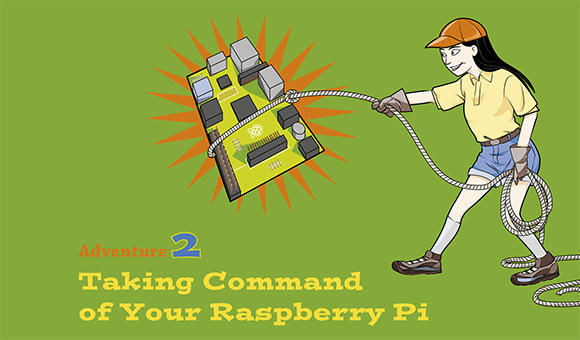
NOW THAT YOUR Raspberry Pi is up and running, how do you tell it what you want it to do? Well, there are a number of ways to communicate with computers, depending on what operating system (OS) it uses. Many of today’s OSs—like Microsoft Windows and MAC OS X—use graphical user interfaces (GUIs). These have icons that you click with a mouse, making the computer very easy to use. Raspbian, the OS you are using on the Raspberry Pi, has a GUI (see Figure 2-1). You can access the GUI by typing startx straight after you log in, as you did in Adventure 1.
If you use the Raspbian GUI, you simply click the icons to access the software programs. As an alternative to the GUI, you can communicate with the Raspberry Pi using text-based instructions, known as commands, without the need for a GUI. This form of communication is called a command-line interface, and the window into which you type the commands is called a terminal. Although the GUI might be more user friendly and easier to understand than text commands, text commands can be faster when you become more experienced in using them. You can also do more things with text commands, such as writing scripts, which are small programs that combine a series of commands to carry out routine computing tasks. In later adventures you will write your own scripts to make something happen.
FIGURE 2-1 The Raspberry Pi GUI
Get Adventures in Raspberry Pi, 2nd Edition now with the O’Reilly learning platform.
O’Reilly members experience books, live events, courses curated by job role, and more from O’Reilly and nearly 200 top publishers.

